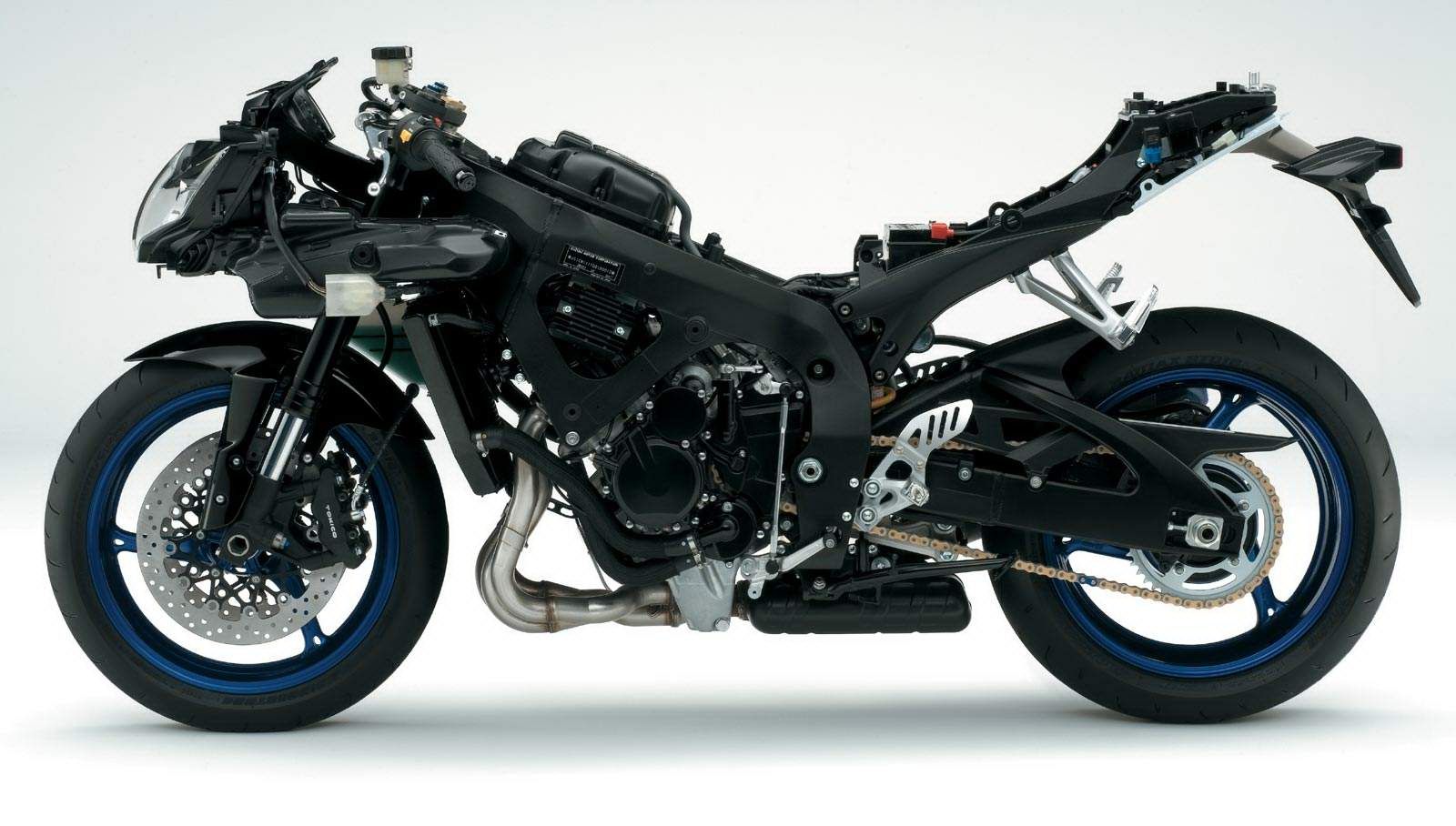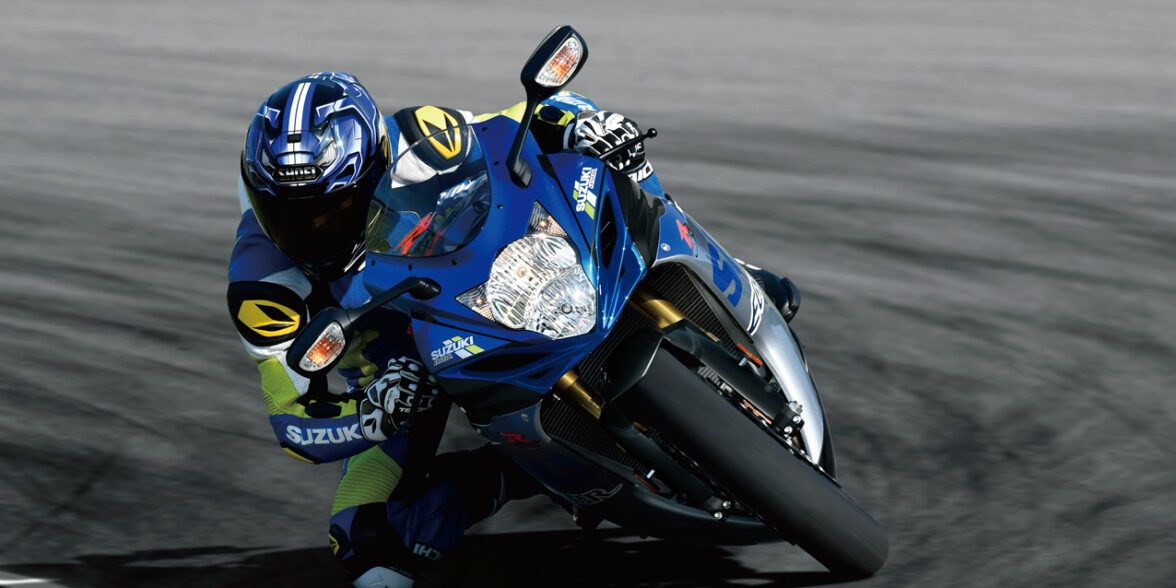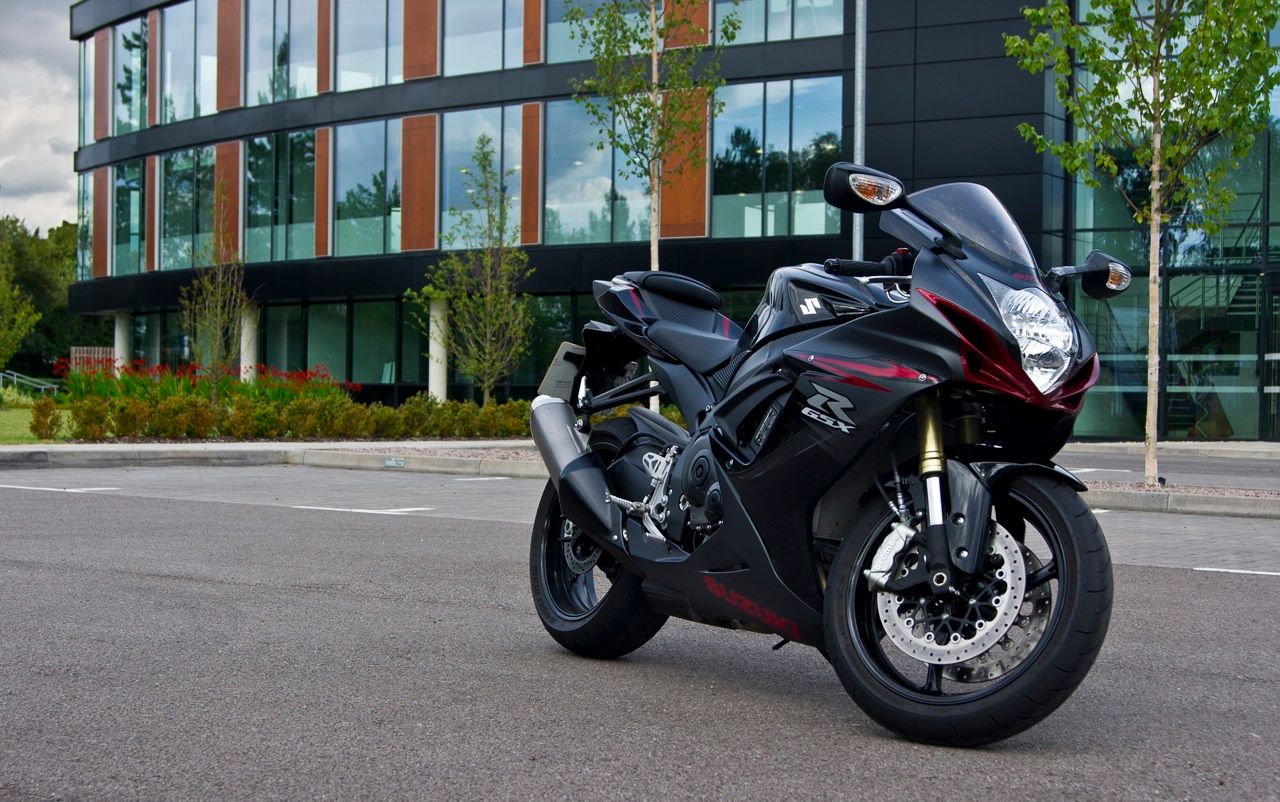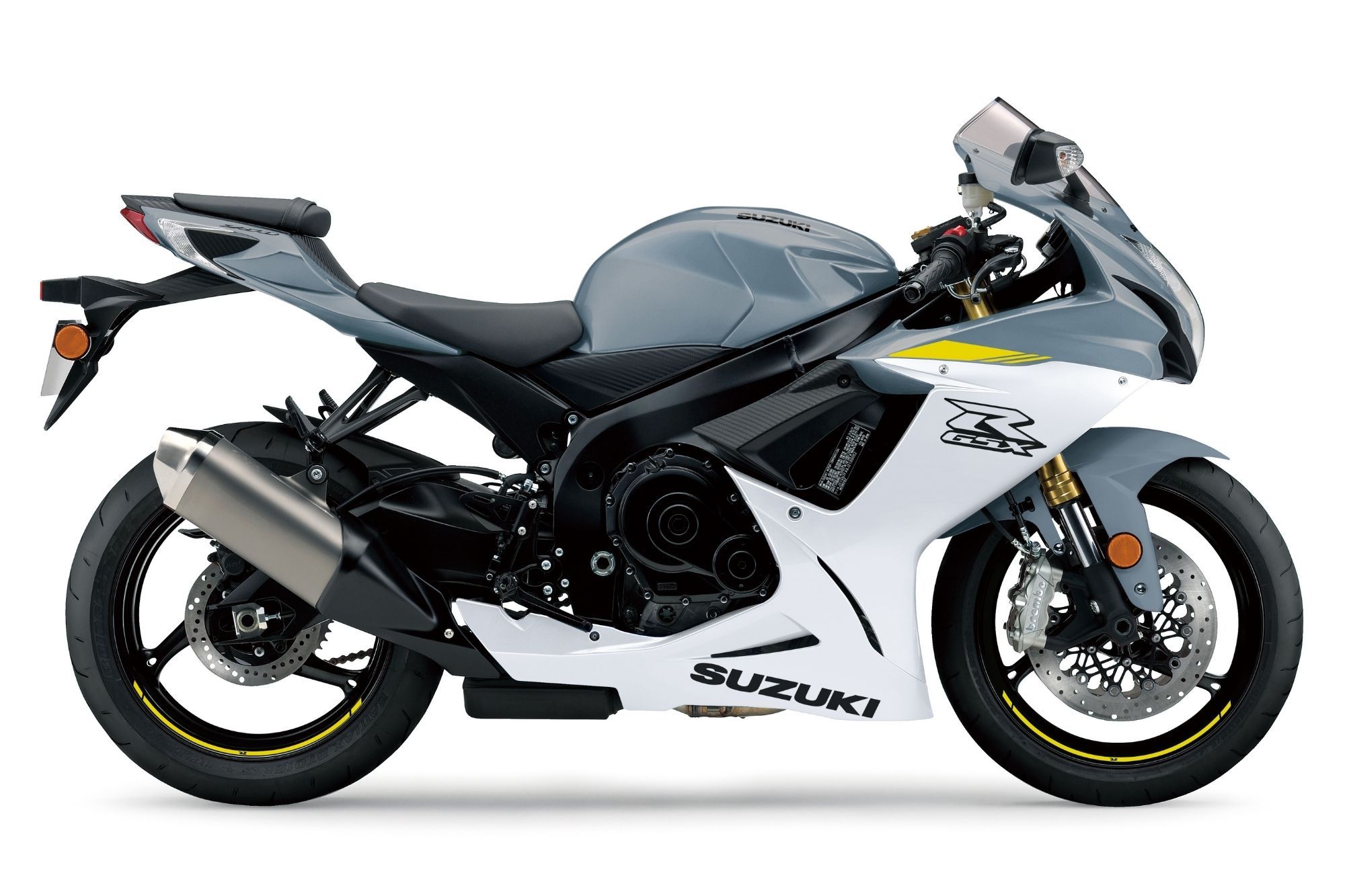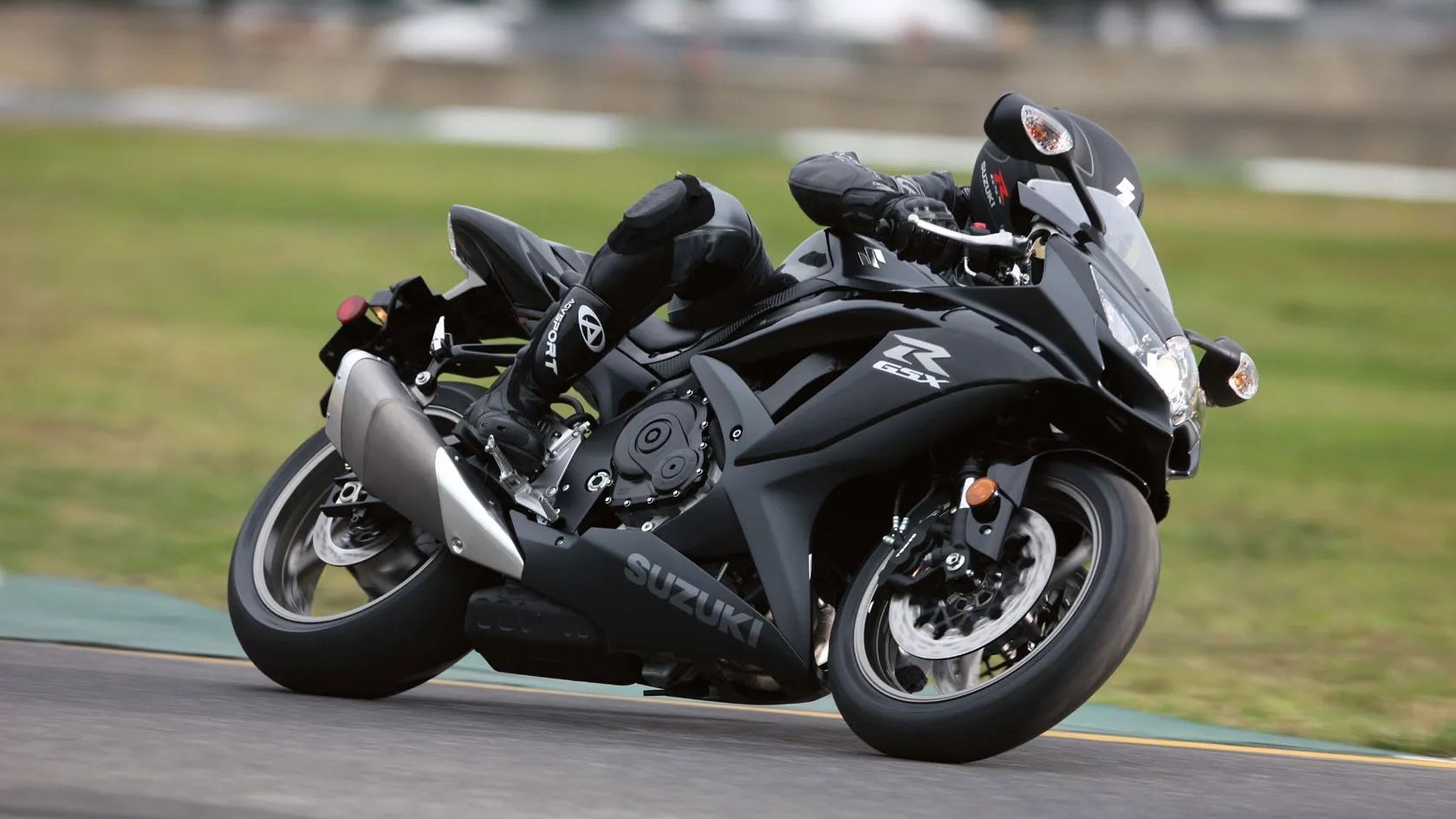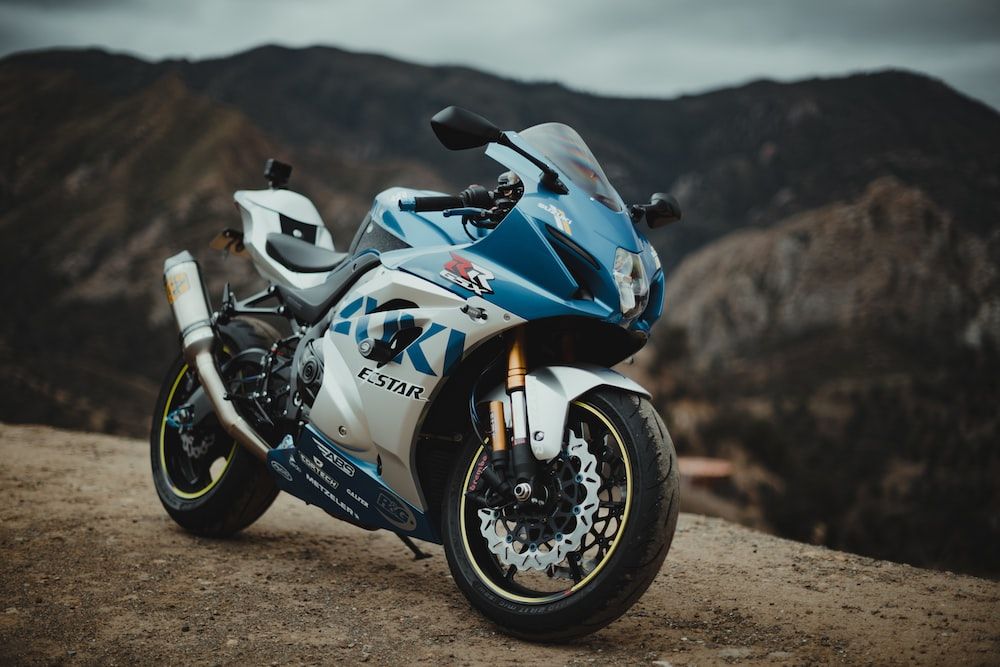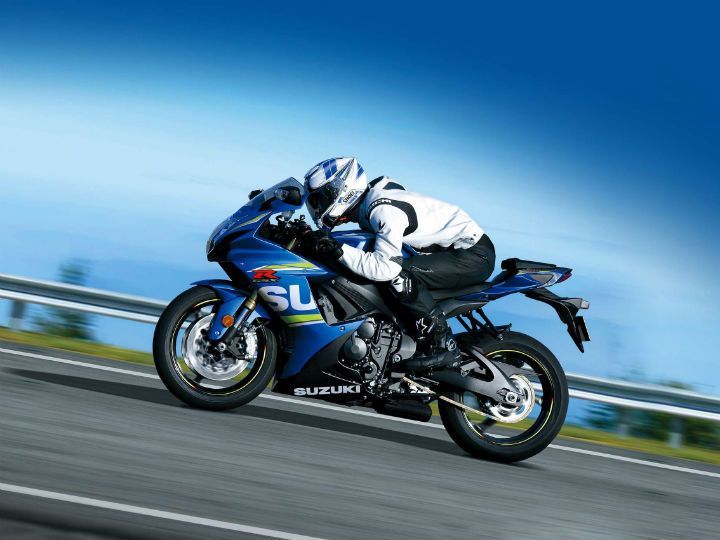In 1985, Suzuki changed the sportbike landscape for the better with the introduction of the GSX-R750, and surprisingly, it’s still with us today, albeit only in the US market.
It has an irresistible blend of smooth four-cylinder power and light, nimble handling that few – if any – sportbikes could match in 1985 and few sportbikes can match for the money today. It’s still one of the purest, most analog sports bikes on the market, and if it hasn’t been updated since 2011, that’s not why it should be overlooked today. Also, if it lacks the electronics that have become such an essential element of modern motorcycles in general, it could be because it is so well balanced and has a lot of passive safety built in through the behavior of its chassis, suspension, brakes and smooth power delivery.
10 Suzuki GSX-R750 Origins
1985 Suzuki GSX-R750, the first of the breed
Despite its age and relative simplicity, the Suzuki GSX-R is still a fantastic bike. If your checklist for a sports bike includes light weight, excellent handling, and a very flexible engine that delivers excellent performance, chances are you’ll look no further. Suzuki has done a good job over the years of keeping the look up to date and what Suzuki doesn’t know about building bulletproof engines isn’t worth knowing.
Surprisingly for a sports bike, it’s not desperately tight or uncomfortable, even for taller riders, the suspension is far from harsh, but performs brilliantly in any circumstance (road or track) and the GSX-R750 is as polished as a comprehensive performance. as one would expect from such a long life.
9 The Heart Of The Beast
2008 Suzuki GSX-R750 chassis
In 1985, motorcycle exhaust emissions weren’t really a problem, so the original GSX-R750 had an air/oil-cooled engine, which produced 112 horsepower (91 horsepower at the wheel rear). Since 1992, the engine has been fully liquid-cooled, and today, output is 148 horsepower (130 rear-wheel horsepower) and 64 pound-feet of torque. But the most surprising thing about the engine is that it doesn’t have to be called to the red line – around 13,000 rpm – to access the performance as it happens with many inline four-cylinder engines. It delivers what you need throughout the rev range: punchy, punchy performance without the need to endlessly scramble the transmission, which is perhaps a good thing as there’s no quickshifter to play with.
8 Crisp handling
Suzuki GSX-R750 cornering
The very reason to buy a sports bike is the way it cuts corners like they’re not there, and in the GSX-R750, you’ve got one of the best in the business. Showa suspension is used front and rear and there’s literally nothing that bothers it, no matter where you are in the corner. It’s very useful for showing how a properly set up motorcycle should behave without having to resort to a suspension and chassis specialist to set it up to your personal preferences. How Suzuki did it no one knows, but here is a bike that anyone can get on and be fast out of the box, inspiring confidence and showing how you don’t have to spend at least twice as much money to be fast.
7 Stop-On-A-Dime Fres
Suzuki GSX-R750 in black
Every element of the GSX-R750 has been refined over the years to a point that approaches perfection. The spec might have been static since 2011 and cynics might argue that it’s because Suzuki simply forgot about the model, but it could also be argued that having achieved near perfection there was nowhere else to go!
Braking duties are courtesy of dual Brembo Monobloc calipers up front that have all the bite, power and feel you could ever want. If not having ABS is a problem for you, then look away now, but if you have an open mind and a sensitive right hand, you’ll have all the safe braking you need.
6 Extreme ergonomics
Suzuki GSX-R750 in gray and white
Look, it’s a sports bike and that generally and accurately means little to no compromise in riding position, and if you have an extreme body shape, you’ll never fit properly. On the GSX-R750, the feet are mounted high, the handlebars clip low, so your hips will be as sore as your wrists, although the feet can be adjusted in three directions to give a fraction more space, but it will never be comfortable for a cruiser. And you can forget about convincing your better half that this was a good purchase by giving them a ride, because with this passenger seat, you’ll more than likely be single in no time!
5 Minimal electronics
Side view of a black Suzuki GSX-R750 on a track.
Right! How do we put this? Maybe it would be simpler to just tell you that you are lucky to have electronic fuel injection and move on quickly! This is one of the most analog bikes you can buy in any category, not just sportbikes. If you like your sports bike to just respond to your inputs and not have your suggestions second guess a computer chip, then the GSX-R750 is the bike for you.
There’s literally nothing – no electronic driver aids of any kind, no ABS, no traction control, no slip control, no quick shift, no wheel control or launch control, no cruise control or nothing heated: nothing. You can choose between full power or a little less, but that’s your part. In a world where you’re told what you can and can’t do and when you can and can’t do it, it’s fantastically refreshing. Just don’t let the lawmakers know, or they’ll be wringing their hands with glee at having something they can ban.
4 Excellent build quality
Suzuki GSX-R750 front three-quarter shot
While you won’t have to worry about the engine at all, we once heard someone say that you could remove the oil drain plug from a Suzuki engine and the engine would seize up after about three weeks of running it… the rest of the GSX-R750 is just as tall. quality and reliable. If there’s nothing flashy about the Gixxer in terms of specs, you won’t have a problem with anything else either. This is a bike that has been built simply but well built. The big advantage of having been in production for so long is that any inherent quality issues will have been eradicated.
Suzuki GSX-R750 in blue and silver
We defy you to find any contemporary road test that has anything meaningfully negative to say about the GSX-R750, in its nearly forty years of existence – bad reviews ain’t there! For example, check out this one, which at one point says, “It’s fun, fast, and handles great, but most of all it’s very easy to ride fast, unlike a bigger sport bike. Pound for pound, we consider it a of the best sports bikes you can buy.”
2 How fast do you want to go?
Suzuki GSX-R750 on the race track
With 148 horsepower, a curb weight of 418 pounds, and no electronics to spoil the fun, a GSX-R750 is a very fast bike. Read the article linked above and you will see that they managed to reach 181mph! From 750cc! This is madness. But as we all know, any fool can go fast in a straight line – it’s the speed around the corners that counts.
Again, we’re not sure we can say this often enough, the GSX-R750 has you covered. The latest liter bikes may have all the electronic toys along with over 200 horsepower, but in the right hands, a Gixxer will put many of them to shame. Buy a used example and do the same, and you’ll make them feel even worse for even less money.
1 Rivals and price
Suzuki GSX-R750 from right to left
Where the 750cc sportbike class used to be hotly contested, displacement is largely forgotten these days. Even the 600cc class is losing ground, but that doesn’t mean the GSX-R750 ($12,849) doesn’t have its fair share of rivals, if you’re prepared to think a little laterally. The Honda CBR600RR ($12,099) is getting as long as the Suzuki, but it’s still a powerful package, that is, if you can fold.
The Kawasaki ZX-6R ($10,999) is in a similar position. Yamaha’s latest parallel-twin R7 ($9,199) can’t hold a candle to the Suzuki in terms of performance, while the Triumph Daytona Moto2 765 might be the closest of them all, but it’s a limited-edition model and , at $17,500, a lot. more expensive. The MV Agusta F3 800 starts at $18,000 and goes into the stratosphere from there, but at that price, you’re starting to head into 1000cc sportbike territory.




